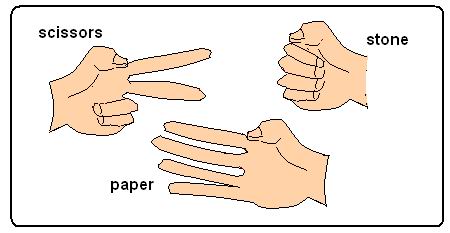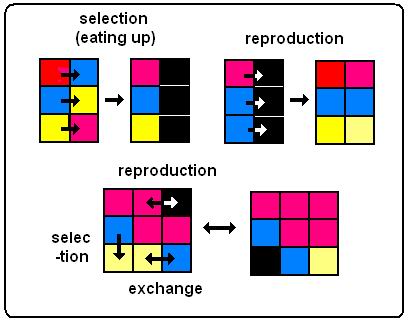How biodiversity adds up
Mathematical bases have been discovered for biodiversity to behave just so, says S.Ananthanaryanan.
The way living things thrive when many species live together seems to fly in the face of Darwinian ‘survival of the fittest’. One way of looking at the
apparent contradiction was to think the different species worked as a team and helped one another. But this does not explain how species relate even to other species that prey on them!
Rock, paper, scissors
In this children’s game, 2 players have to simultaneously choose one of 3 options, ‘rock’, ‘scissors’ or ‘paper’. If they choose the same, they play
again, till the choices are different. There are then 3 possibilities - ‘rock breaks scissors’, ‘scissors cuts paper’ and ‘paper covers rock’. This means 1 of the 2 players has to win, but neither can be sure if she will.

This simple child’s game, usually resorted to for deciding which one will do an onerous task, or even get the first go at an attractive one, turns
out to be an example of an important algebraic structure – the kind where the relation where a thing is greater than another, but less than yet another does not imply the obvious relation between the greatest and the smallest. In this case, ‘paper’ is shredded
by ‘scissors‘and ‘scissors’ shatter when faced with ‘rock’. Still, it is ‘rock’ that succumbs to ‘paper’ and not the other way about!
Rock, paper, scissors is now known as ‘RPS’ and forms an important part of the mathematicians’ area of study, in algebra, in game theory, analysis of
statistical processes, and the like.
Biodiversity
The relations between different living things that coexist in the wild seem to be a kind of RPS too. One species preys on another and the preyed upon
species lives off yet another. And then, the third species preys on the first! This of course is the simplest case - there may be many more stages in the circle.
But the simplified sequence is that when the first species gets active, it reduces the danger to the third species, which is to its own peril. And as
its numbers go down, the second species regroups and sets on the third species, to the relief of the first species!
In real life, species do more than prey on each other, they also reproduce and move about, in search of mates or food. But the complementary nature of
RPS is retained with this more complex version of the game, and even with a great many more players
Current research
Nature this week reports the work of Ervin Frey and colleagues at the Ludwig Maxmillian University at Munich. They
noted that in a static situation, an ecosystem of competing populations is the same as RPS, species can coexist and biodiversity is maintained. But how does it work when the species move about?
The scientists modeled the situation as 3 kinds of entities located in a spatial lattice.
There would be a rate at which the occupant of a square in the lattice would eat her food species in a neighbouring square, or reproduce and create another of her kind in a vacant neighbouring square. And then, there is the rate at which the entities
may exchange places or move to vacant squares.

The rates of selection and reproduction were fixed with reference to the units of the lattice and for ‘mobility’, the area covered in wandering motion,
was computer-simulated as a ‘random walk’. At low rates of mobility, it was found that the species coexist, forming patterns of moving spirals. As the mobility was increased, the spirals fanned out till they disappeared. When the spirals were gone, the system
adopted a uniform state, with only one species surviving.
A remarkable finding was that there is a
threshold mobility above which biodiversity perishes. There is thus a critical value below which the 3 species coexist, but above that value, 2 of the 3 species become extinct.
The work has been verified with strains of bacteria cultured in glass dishes, with the mobility controlled by varying the viscosity of the culture medium. The work is seen as having applications wherever there is interplay
of coexisting populations, including in the social sciences and maybe in the behaviour of markets.
[The writer can be contacted at simplescience@gmail.com]